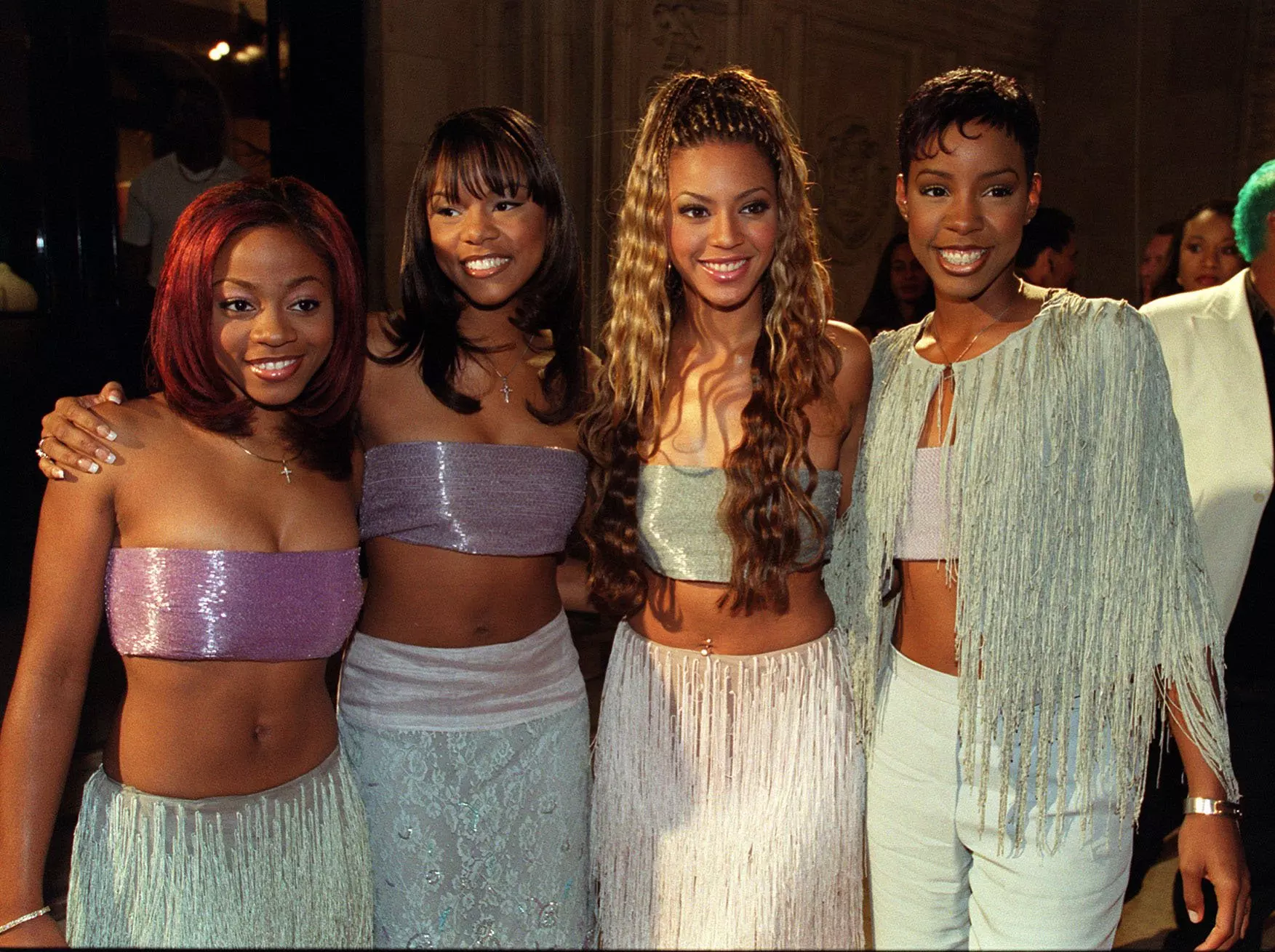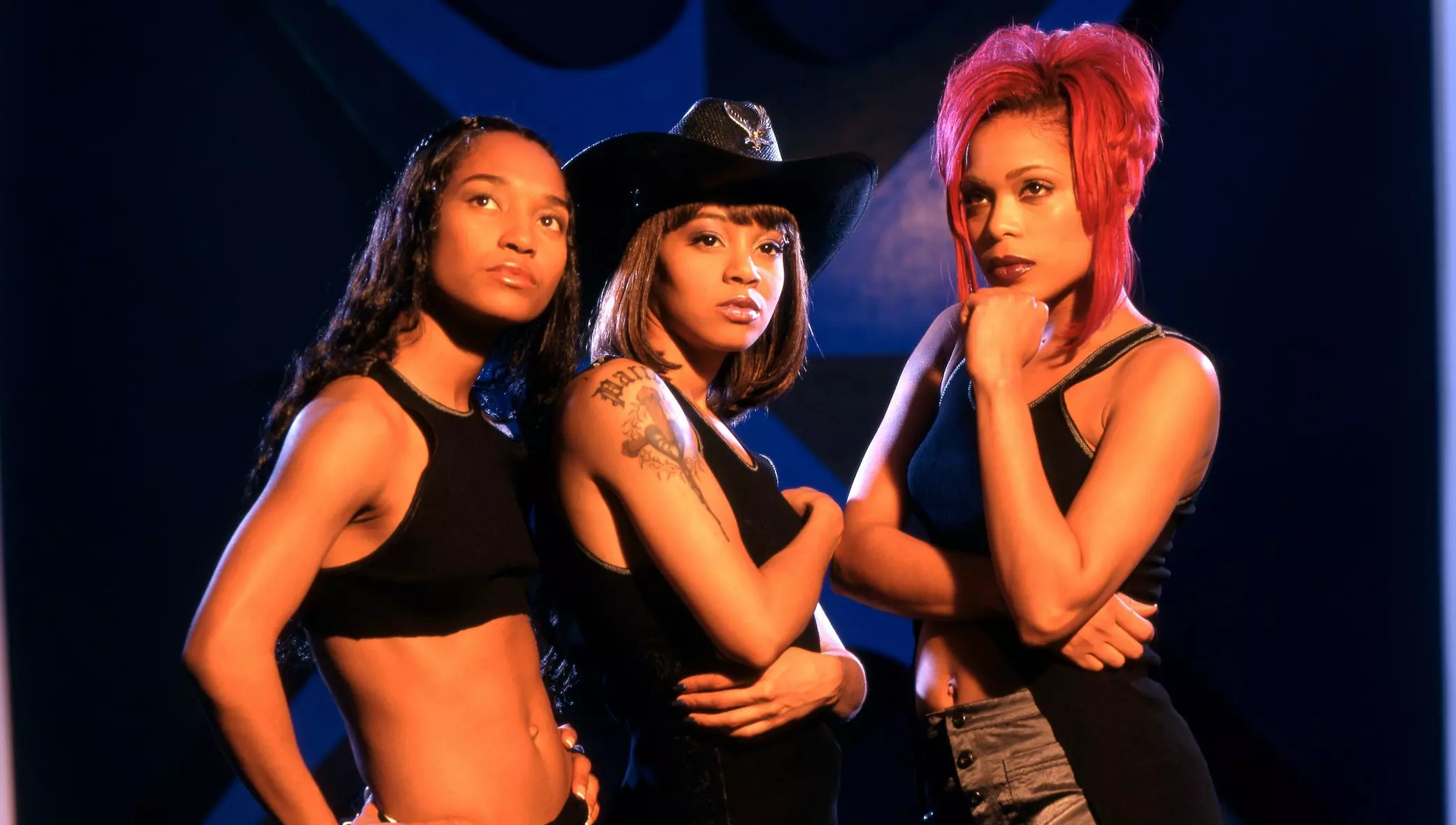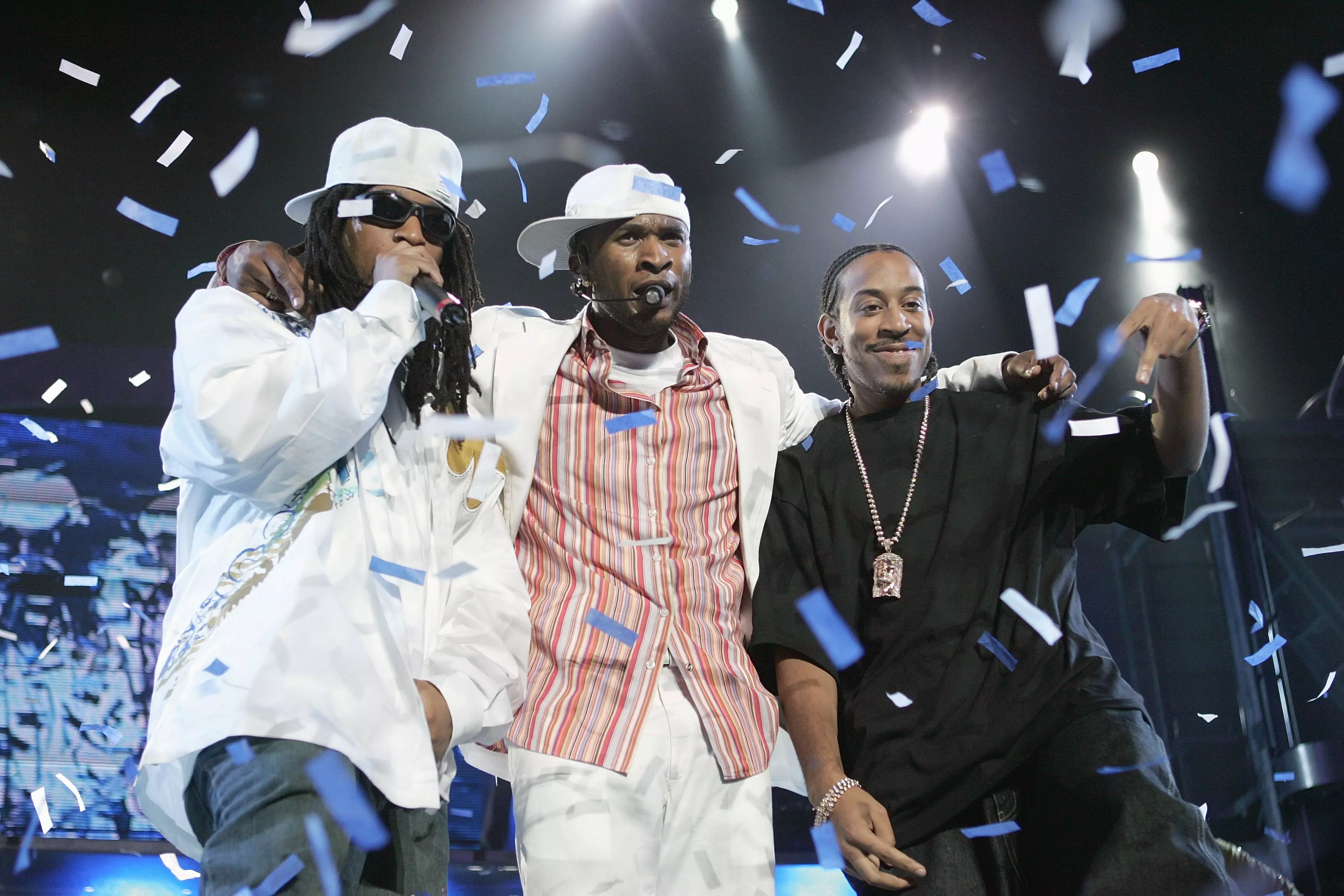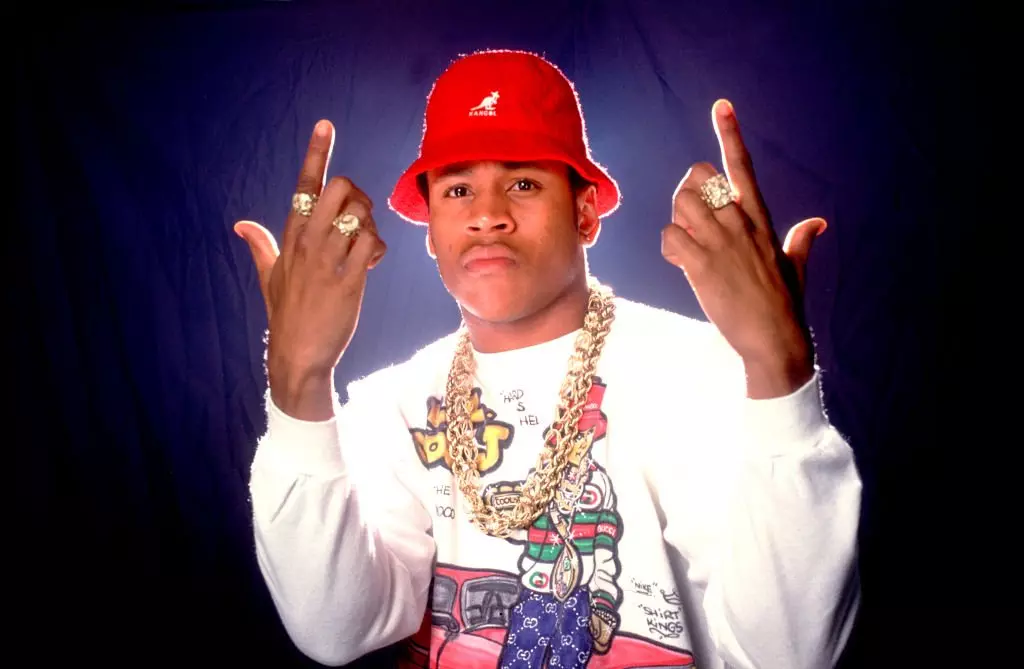Graphic: The Recording Academy
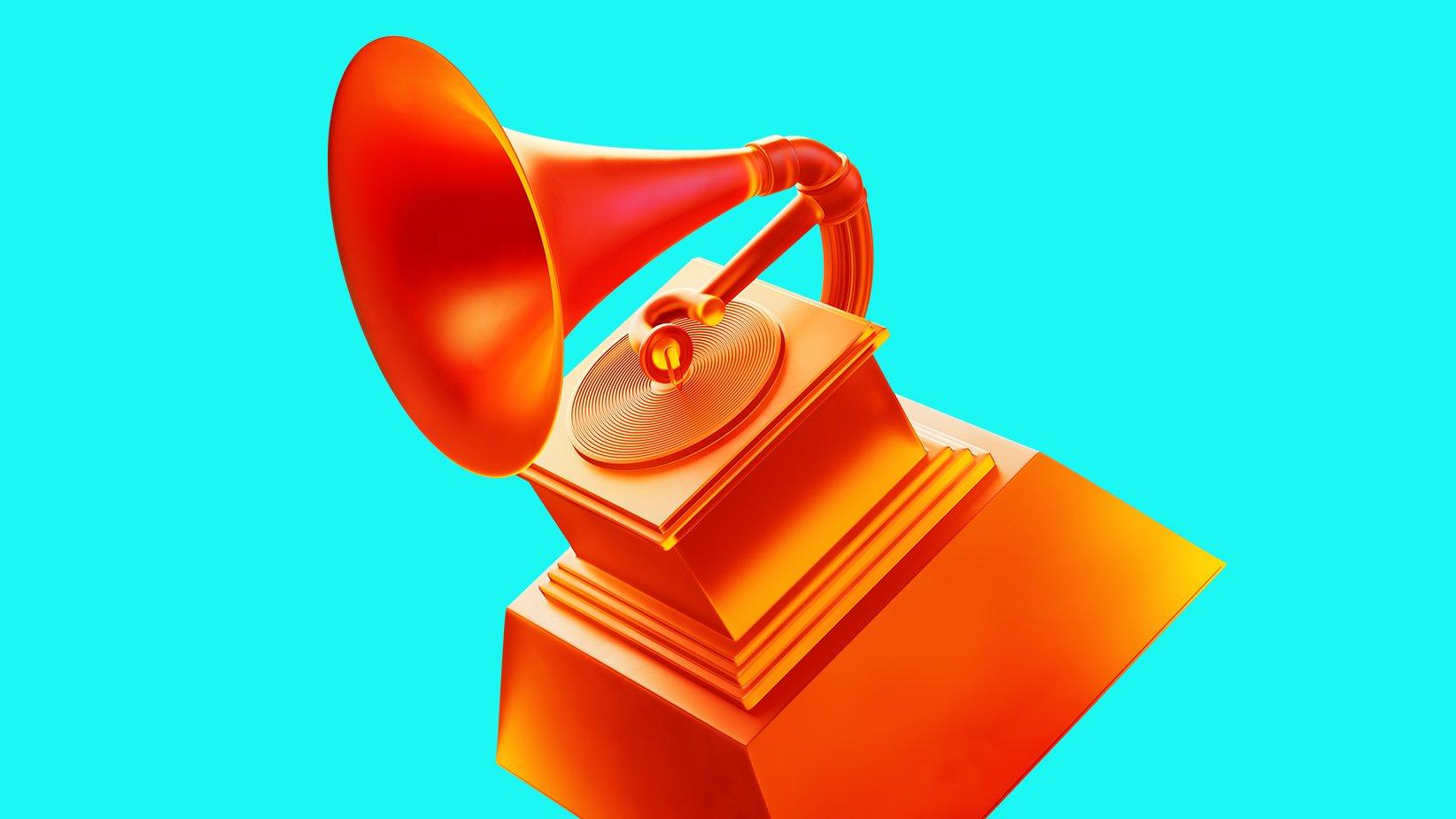
news
Listen: All Of The Dance/Electronic Music 2023 GRAMMY Nominees In One Playlist
Ahead of Music's Biggest Night on Feb. 5, 2023, celebrate with this spirited playlist of every Dance/Electronic Music nominee at the 2023 GRAMMYs.
2022 marked the thrilling return to the dancefloor, and the music nominated for the 2023 GRAMMYs in the Dance/Electronic Music field keeps the party going. There are two categories in the Dance/Electronic Music field of the 2023 GRAMMY nominations, and you can hear all of the nominees in one playlist.
The nominees for Best Dance/Electronic Recording stimulate listeners with poppy drama and emotion. Beyoncé's "BREAK MY SOUL" spotlights house music with sensuality, while Bonobo's "Rosewood" and RÜFÜS DU SOL's "On My Knees" pulse with a steady, infectious vigor.
Collaborations are key in this category. Diplo and Miguel's "Don't Forget My Love," David Guetta and Bebe Rexha's "I'm Good (Blue)," and KAYTRANADA and H.E.R.'s "Intimidated" all excite with passionate, soul-stirring energy.
Nominees for Best Dance/Electronic Music Album include Beyoncé's Renaissance, Bonobo's Fragments, Diplo's Diplo, ODESZA's The Last Goodbye, and RÜFÜS DU SOL's Surrender. Dynamically blending disco, pop, R&B, and future bass. These high-energy albums light the fuse of a party that can burn all night.
Listen to all of the above songs and albums in this comprehensive playlist of the Dance/Electronic Music GRAMMY nominees at the 2023 GRAMMYs.
Check it out on Pandora, Spotify, Apple Music, and Amazon Music — we'll see you at Music's Biggest Night on Sunday, Feb. 5!
Playlist powered by GRAMMY U.
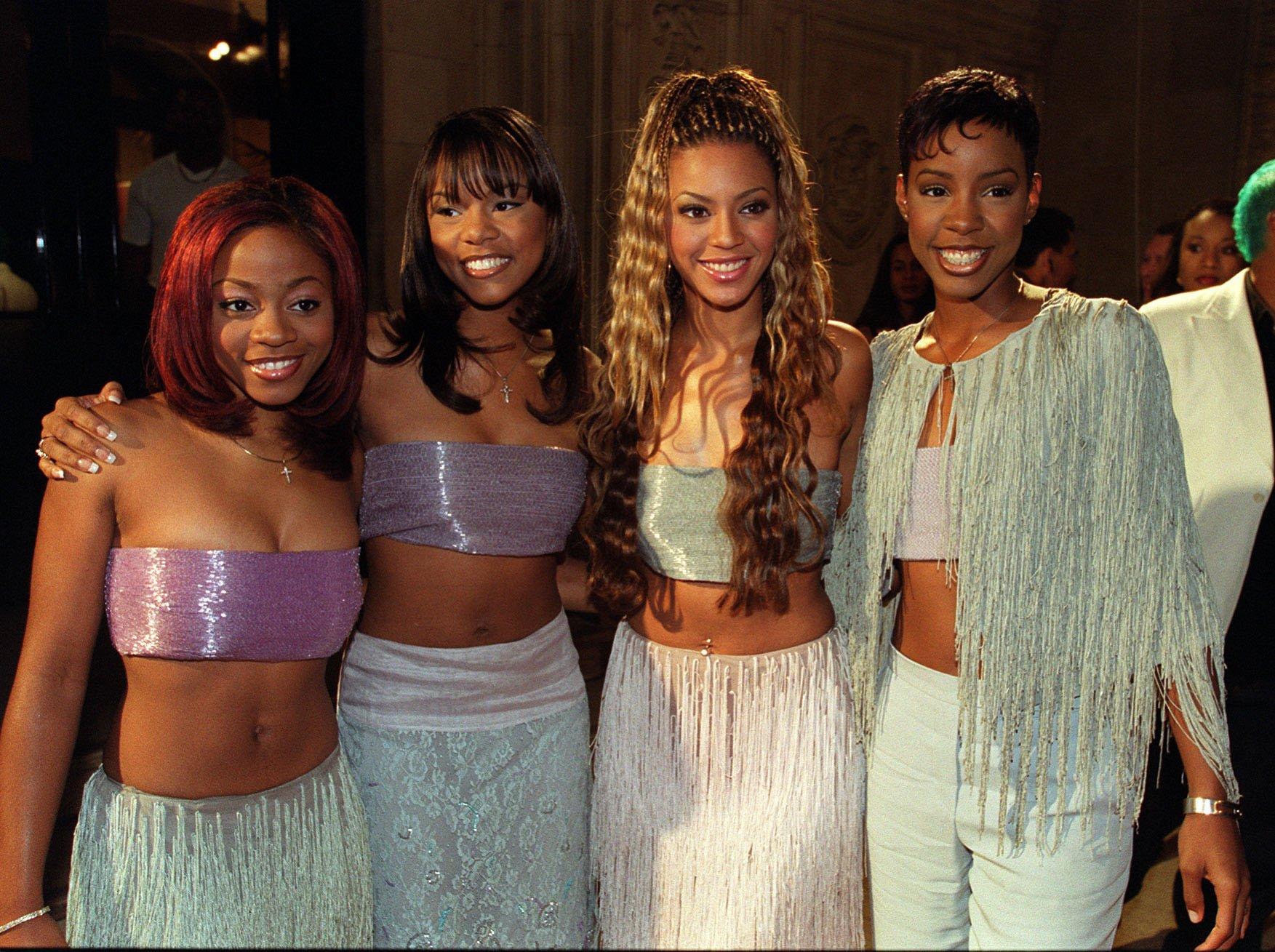
Photo: Michael Crabtree - PA Images/PA Images via Getty Images
list
5 Reasons Why 'The Writing's On The Wall' Is Destiny's Child's Defining Album
From its embrace of experimental R&B production and memorable music videos, to its GRAMMY-winning empowering songs, 'The Writing’s On the Wall' remains a touchstone for fans of Destiny's Child.
In 1997, all-female R&B groups were thriving: TLC already had seven Top 10 hits on the Billboard Hot 100, En Vogue had numerous platinum singles, and Xscape reached No. 1 more than once. Soon, a quartet of teenagers would burst upon the scene and leave an indelible impact.
While Destiny’s Child are now canonical in the world of '90s and early aughts R&B, the group initially experienced spotty success. Their 1997 debut single, "No, No, No (Part 2)" peaked at No. 3 on Billboard’s Hot 100 and was certified platinum. Yet their eponymous album, released in February 1998, only hit No. 67. Their follow up single, "With Me," also failed to set the charts ablaze.
Destiny’s Child's underwhelming chart performances could’ve easily derailed the budding group. Fortunately, the four ambitious girls from Texas had other plans.
Beyoncé Knowles, Kelly Rowland, LaTavia Roberson, and Le Toya Luckett were determined not to become one hit wonders, and quickly went back into the studio to record their sophomore album. Released on July 14, 1999, The Writing’s On the Wall became Destiny’s Child’s highest selling album and spawned some of their most iconic songs — one of which led to the group's first GRAMMY win. Not only did the album establish Destiny's Child as a household name, but it fine tuned the R&B girl group concept to perfection.
"We had no idea that The Writing's on the Wall would be as big a record as it was. Especially worldwide," Beyoncé said in a 2006 Guardian interview.
In celebration of the iconic album's 25th anniversary, read on for five reasons why The Writing’s On the Wall is the defining album of Destiny’s Child’s career.
Its Members Took Creative Control
On their debut album, Destiny’s Child tapped into the neo soul trend popularized by the likes of D’Angelo, Erykah Badu, and Maxwell — artists in their early-to-mid twenties with a maturity the teen quartet didn’t yet have. The references and creative direction clashed with the reality of the group members being so young.
"It was a neo-soul record and we were 15 years old. It was way too mature for us," Beyoncé tol the Guardian.
Heading back into the studio, the girls made sure to eradicate any misalignments and put more of themselves into their sophomore album. In an interview with MTV, the members said The Writing’s On the Wall had a fresher, more youthful vibe because "it comes from us." The quartet's fingerprints are all over the 16 track album: Each member co-wrote at least 50 percent of the album.
"Even at the time, Beyoncé would produce a lot of their background vocals, and she was a leader even at a young age," Xscape's Kandi Burruss said in a Vice interview, reflecting on her work as a songwriter and producer on The Writing's On the Wall. This heightened presence enabled the group to develop lyrics that boldly reflected their opinions and youthful energy. In turn, The Writing's On the Wall netted a run of iconic hit singles.
Read more: Destiny's Child's Debut Album At 25: How A Neo-Soul Album From Teens Spawned R&B Legends
It Pushed R&B Forward
Like its predecessor, The Writing’s On the Wall is very much an R&B album. However, Beyoncé's father Mathew Knowles — who still managed the group at the time — brought in producers who weren’t afraid to experiment. The result was a more commercial album that fused classic R&B with pop influences, creating a sound that was simultaneously contemporary and timeless.
Kevin "She'kspere" Briggs and Burrus (who would go on to co-write and produce TLC’s "No Scrubs") contributed to five of the album's tracks, shaping its overall sound and differentiating it from Destiny’s Child. The duo kept a few elements from the group’s debut effort, including the sing-rapping heard on "Bug A Boo" and "Hey Ladies." With syncopated beats, thumping basslines, and their knack for writing catchy hooks, Briggs and Burrus created R&B records with the perfect blend of chart-friendly accessibility.
On the Missy Elliott produced "Confessions," synthesizers, drum machines, and electronic garbling were layered to create a lush, futuristic backdrop. Further subverting the classic R&B ballad, Elliott paired what sounds like a cabasa to match Beyonce’s cadence throughout the verses which gives her laidback vocals an almost robotic feel. In addition to producing, Elliott’s velvety vocals also appear quite prominently on the chorus, adding to the track’s sonic tapestry.
GRAMMY-winner Rodney Jerkins was tapped to produce "Say My Name." The original beat Jerkins used was two-step garage, a subgenre of UK garage. No one else liked the sound, so he completely revamped the track into the GRAMMY-winning anthem we know today. Jerkins melded funk-inspired guitar and a call and response approach, then modernized them with a shimmery, polished production. This helped "Say My Name" become the group’s most listened to song on Spotify with over 840 million streams. Jerkins has even gone on record to say this is his favorite song he’s produced to date.
Read more: "Say My Name" 20 Years Later: Why The Destiny's Child Staple Is Still On Everyone's Lips
Its Music Videos Praised Black Culture
"For me, it is about amplifying the beauty in all of us," Beyoncé said in a 2019 interview with Elle when asked about the importance of representation. Even before her solo work, the importance of spotlighting Black culture was evident in Destiny's Child's music videos.
In "Bills, Bills, Bills," we see the group play the role of hair stylists in a salon which is an obvious nod to Beyoncé's mother’s longstanding relationship with all things hair. Near the end of "Bug a Boo," the members change into their version of majorette costumes and dance in front of a marching band. Majorettes and marching bands have a vibrant legacy within HBCUs; almost 20 years after this video premiered, Beyoncé revisited this very concept for her 2018 Coachella performance.
It Delivered Mainstream Success
The Writing’s On the Wall was a hit across the charts. The group earned their first No. 1 singles on Billboard’s Hot 100 with "Bills, Bills, Bills" and "Say My Name." Promotions for the latter also reinvigorated album sales and helped shift another 157,000 copies (an impressive 15 percent increase from their first-week sales). The fourth and final single, "Jumpin’, Jumpin’" was released during the summer of 2000 and became one of the most played songs on the radio that year.
Songs from the album were nominated at both the 42nd and 43rd GRAMMY Awards. Destiny’s Child took home their first golden gramophone at the 2001 GRAMMYs, winning Best R&B Performance by a Duo or Group with Vocals for "Say My Name." The single also won Best R&B Song and was nominated for Record Of The Year.
With 14 nominations, Destiny’s Child remain the most nominated girl group in GRAMMY history. With worldwide sales of 13 million, The Writing’s On the Wall is also the fourth best-selling girl group album of all time.
It Expanded The Concept Of "Girl Power"
The Writing’s On the Wall was much more than catchy, radio-friendly tunes. Lyrically and in production, the album reintroduced Destiny’s Child as the architects for their own lives. The tongue-in-cheek Godfather-inspired intro tees up each song with a commandment for their partners and, at times, for themselves.
Often misconstrued as a gold digger anthem,"Bills, Bills, Bills" empowers a woman to confront a lover who's financially taking advantage of her. This is a far cry from the theme of a young woman focused on finding love — a common theme on Destiny's Child — and puts their confidence on full display. "So Good" is a sassy, uplifting anthem which explicitly addresses haters with pointed lyrics like "For all the people ‘round us that have been negative/Look at us now/See how we live." Destiny's Child was sending a clear message: they’re going to be fine regardless of what others say.
And when the group became tabloid fodder due to unexpected lineup changes, "So Good" took on a new meaning for persevering through hard times. While there are some songs with morally questionable lyrics — we’re looking at you ‘"Confessions" — the consistent message of embracing one’s self-worth and independence is clear.
More Girl Group Sounds & History
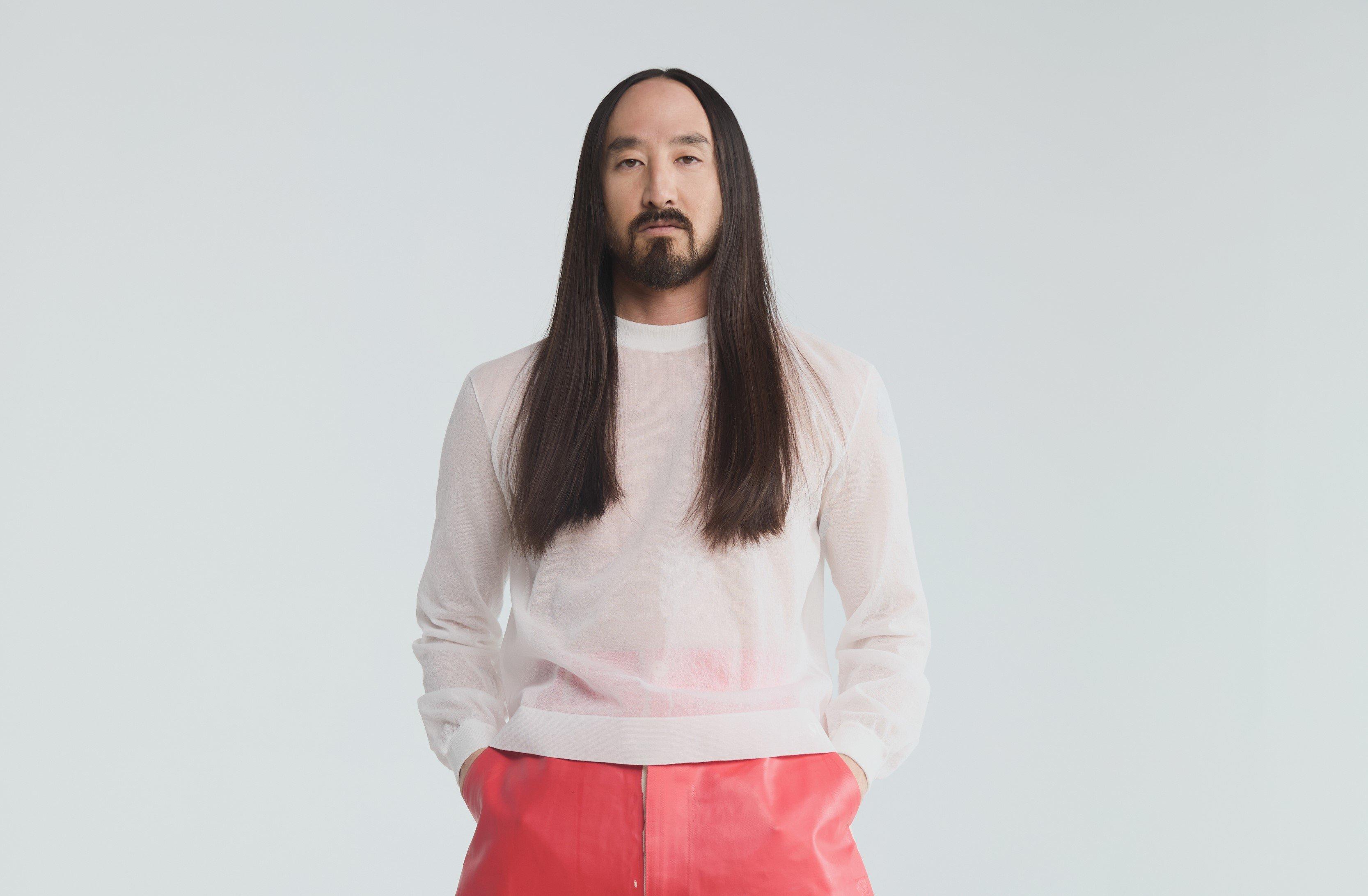
Photo: Jana Schuessler
interview
On 'Paragon,' Steve Aoki Keeps Pushing: "This Is By Far The Most Innovative Dance Album I've Ever Done"
From techno to electro, 'Paragon' runs the gamut of dance sounds.Out June 28, the LP is decisively for the dance floor and reflects "a newer sound of Steve Aoki."
The title of his ninth studio album is an apt description of Steve Aoki himself.
The cake-throwing DJ/producer — best known commercially for his 2012 remix of Kid Cudi, MGMT, and Ratatat’s "Pursuit Of Happiness" — can very well be called a paragon of longevity in dance and electronic music. And like his stature as one of the world’s highest-paid DJs (Forbes regularly cites him on its annual list), this status is hard-won.
"[The dance music industry] is…not forgiving," he tells GRAMMY.com on a Zoom call from his home in Las Vegas. He appears in quintessential Aoki fashion: shirtless, his long, dark hair cascading down his shoulders. "Yes, I have a safety level where I can continue to play shows based on old tracks, but that doesn't last very long. You have to constantly stay ahead."
Akin to HiRO — the protagonist of the HiROQUEST graphic novel series that he created to pair with his last two studio albums, HiROQUEST: Genesis and HiROQUEST 2: Double Helix — Aoki is on a quest of his own. HiRO (a genetically augmented meta-human) is tasked with traveling into the multiverse 400 years into the future to save Earth from an unavoidable disaster. Aoki’s charge — continuous innovation of his craft to sustain his longevity in dance music’s ever-saturated and rapidly-moving market — is no less dire nor significant to the Dim Mak Records founder.
"I've always had this starvation complex where I have to keep doing my s—, or else I'm going to die," he muses casually, phone in hand as he paces around his house, as he’s done since he joined our call. Judging by the deadpan manner in which he delivers this line and the laugh that caps it off, this is not a revelation for Aoki. As the Greek maxim goes, "know thyself." Assuredly, he does, and well enough to know he has to keep doing his thing, hence Paragon.
The 18-track project, out June 28, harkens back to Aoki’s dance floor roots following 2023’s Latin-influenced HiROQUEST 2: Double Helix and 2022’s alternative- and punk-guided HiROQUEST. It teems with high-profile crossover collaborations, like "Heavenly Hell" (Ne-Yo), "Electrowavebaby 2.0" (Kid Cudi), and "Get Lower" (Lil Jon). Most importantly, though, it reflects "a newer sound of Steve Aoki" — a compelling and contemporary means of extending his "safety level" in the dance space.
Ahead of Paragon’s release via his own imprint and an international tour, Steve Aoki spoke with GRAMMY.com about the album’s relationality to his artistic identity and HiROQUEST and why, even after nine albums, he’s still "very excited and very hungry to get back in the studio and continue to write music that matters."
This interview has been condensed and edited for clarity.
Why was now the right time for you to go back to your true dance roots?
An album is always about where I am at that moment. I look at each album in a way where I don't want to think too deeply about it. I want it to be more of a timestamp that, in 10 years’ time, reflects that moment in time for me.
This time, a lot of the collaborations I was doing just fluidly became more of the same synergy. It’s a flow, and Paragon is also directly reflective of the kind of music I'm playing at my shows.
Dance music is certainly on a rise, especially the newer sounds of dance music. Sonically, the climate's changing a lot, which challenges me as a producer who was more dominant in the 2010s. I was putting out a lot of music then, and those songs were more prolific in the electronic dance music community.
Now, I'm challenged to stay ahead of my own production. The DNA of your sound stays with you, but you’ve got to always innovate, and this is by far the most innovative dance album I've ever done.
What, in your opinion, makes 'Paragon' so innovative?
When I go back into Paragon and I listen to each song, it's a newer sound of Steve Aoki; it's very dynamic and diverse. There’s house records, there's techno records, there's different beats-per-minute ranges — it's not just hard-hitting festival records.
I think it's forward-thinking for me as a producer, and I'm already working on the "Part B." I distinctively made it shorter than my previous three albums, which were over 20 songs each. This is more of a traditional album length because I look at it as a two-part story musically.
I have a bigger story that I've been attaching to my albums, like HiROQUEST and HiROQUEST 2. I wrote a book that joins those two albums into a full-length science fiction fantasy anime storyline with art and cards and collectability factor, all that fun stuff outside of music.
Paragon is going to be an Easter egg or precursor to what's to come — the continuation of HiROQUEST. I just wanted to not use the name HiROQUEST because I wanted to do something different.
How does the album’s title fit into this larger narrative?
The Paragon Aura is a huge theme of Book 2 of HiROQUEST — it's what brings HiRO back from the "lost world" where he's been stuck. He essentially dies at the end of Book 1 and gets stuck in this lost world. This aura brings him back.
The HiROQUEST is a quest of 10 rings and HiRO is trying to obtain all 10, so he gets this power that’s going to be discussed in Book 2. In order to forge the 10 rings to this omnipotent god ring, he has to use the Paragon Aura. The Paragon Aura is an extremely powerful tool and it's a big theme of the second book.
You’re certainly a paragon of longevity in the dance space, which is rare. How have you maintained such an enduring and continuously expanding presence?
The hunger needs to be there. It doesn't matter how successful you might be to the world. Yes, I have a safety level where I can continue to play shows based on old tracks, but that doesn't last very long. You have to constantly stay ahead.
I think dance music is a bit different from rock or other genres where you can tour off your old catalog. Blink-182 never has to make another new song if they don't want to; they're going to sell out stadiums based on their catalog. Radiohead, Coldplay, they never have to make another new song — they're going to sell out.
There's certain artists in the dance world that are veterans in the space. They’re household names. Like Tiësto or David Guetta…they don't have to release any more music, but they do. When they drop new music, it's still consistently part of culture, which is so exciting. I think that's exciting about the dance world; we still have a strong fingerprint.
Do you count yourself among the veteran dance acts who don’t have to release more music if they don’t want to?
There are definitely people who might think I'm in this category, but I don't personally think about myself like that. Not doing so keeps me fighting for it. I'm still very excited and very hungry to get back in the studio and continue to write music that matters.
The baseline has to be that you're giving all of yourself to this. I still remember touring in a band with four sweaty dudes, showering once a week, and staying at people's houses. Not once in those 14 tours did we ever stay in a hotel. All the money went to gas and feeding ourselves.
We’d be broke by the end of the tour, and I’d be ready for the next one. I still remember the feeling of okay, we’re broke, we’re stinky, and we’re back in our town. Now we gotta write more music to get back on the road again, and I loved it. I did like 14 full tours by the time I was 21. It's a lot more luxurious these days but doing what you love has to be the foundation or else you can't survive the hard.
I've been doing my record label, Dim Mak, for almost 30 years now. The people who have worked for Dim Mak…it's a lifestyle. Yes, they're working to get a paycheck, but they're working first and foremost because they believe in the culture. You have to be down with the culture first and the paycheck second.
What can fellow DJ/producers take from the example you’ve set?
I think the most important thing is to never stop making music and leveling up your shows because those are the two most important things as an artist in any space. The live experience is really important. Your music is number one, though, because if your music's not good, no one's even going to go to your live show. You need to build your sound to a point where people know your music as you, and then you better show up and make your show really good. And not even just good — you’ve got to make it your own show.
A Steve Aoki show is a unique show, and in some cases, it's outperforming my music. People will talk more about my cakes than my new album. I'll take it though, because I just want people to have a great experience.
There are a lot of artists who find their sound, develop it, people latch onto them, and then they just fizzle out for whatever reason. When it fizzles out, that's when the real test comes and it’s to go back to it. If you really care about the long game, you’ve got to keep putting more cakes in the oven.
Nine albums is a tall tally, especially for the dance genre, where the album is not the dominant format. Why is it important to you to continue making albums despite this dynamic?
I've always been an album guy because I was a band guy. When you're in a band, the most important thing is to make an album, not a song. You have to make a collection of music that defines you.
When I was in bands, I listened to albums, and I’d listen to every single song. I know people don't do that anymore, but I still like to follow that, I can't help it. I collect vinyl; I do certain things in the old-school sense that you can't kick out of me.
Read more: 8 Times Dance Stars Channeled Their Inner Punk Kid, From Deadmau5 & Gerard Way To Rezz & Silverstein
I know people aren't listening to the full album. I know they're listening to the song that's probably the main song of the whole album. And even if one one-hundredth of my fans listen to the full album, I don't actually care. I'm still going to make the album. It goes back to the most important thing: I'm doing it for myself first.
I love telling a story. All the attention to detail and my intention to create this moment in time means so much to me. I know one one-hundredth of the people are going to be there for it, and I'm totally fine with that. I've grown a community of fans because I care so much about the detail; I go so deep into the story. I do it for them too. And the people who are in and out and come just for the quick hit, that's fine. They're absolutely welcome and invited to be part of it.
That one one-hundredth appreciates the concept-driven approach to album-making, especially because this genre isn’t exactly known for that compared to other genres.
Yeah, and I think a lot of stuff that I'm doing, especially with HiROQUEST, has not been done before, like bringing in anime culture, card culture, comic books, and manga. No one's doing that in [dance music]. The Weeknd did a comic book and so did Kid Cudi. I'm following the same practice of combining these worlds.
And I went deep in HiROQUEST: Book 1. It's 50,000 words. I spent like 16 months writing this book; it’s 250 pages. That’s a big ordeal, but what's great is we’ve already sold out two printings. We're already in our third printing now, which is incredible for a story that had never been heard before.
I love my fans for that. It allows me to have the courage to keep going. To step out like this is a lot of work and a lot of time, and you don't want to fall on deaf eyes and ears. I'm already writing Book 2.
Tove Lo & SG Lewis Crafted Sweaty New EP 'HEAT' In Celebration Of Their Queer Fans
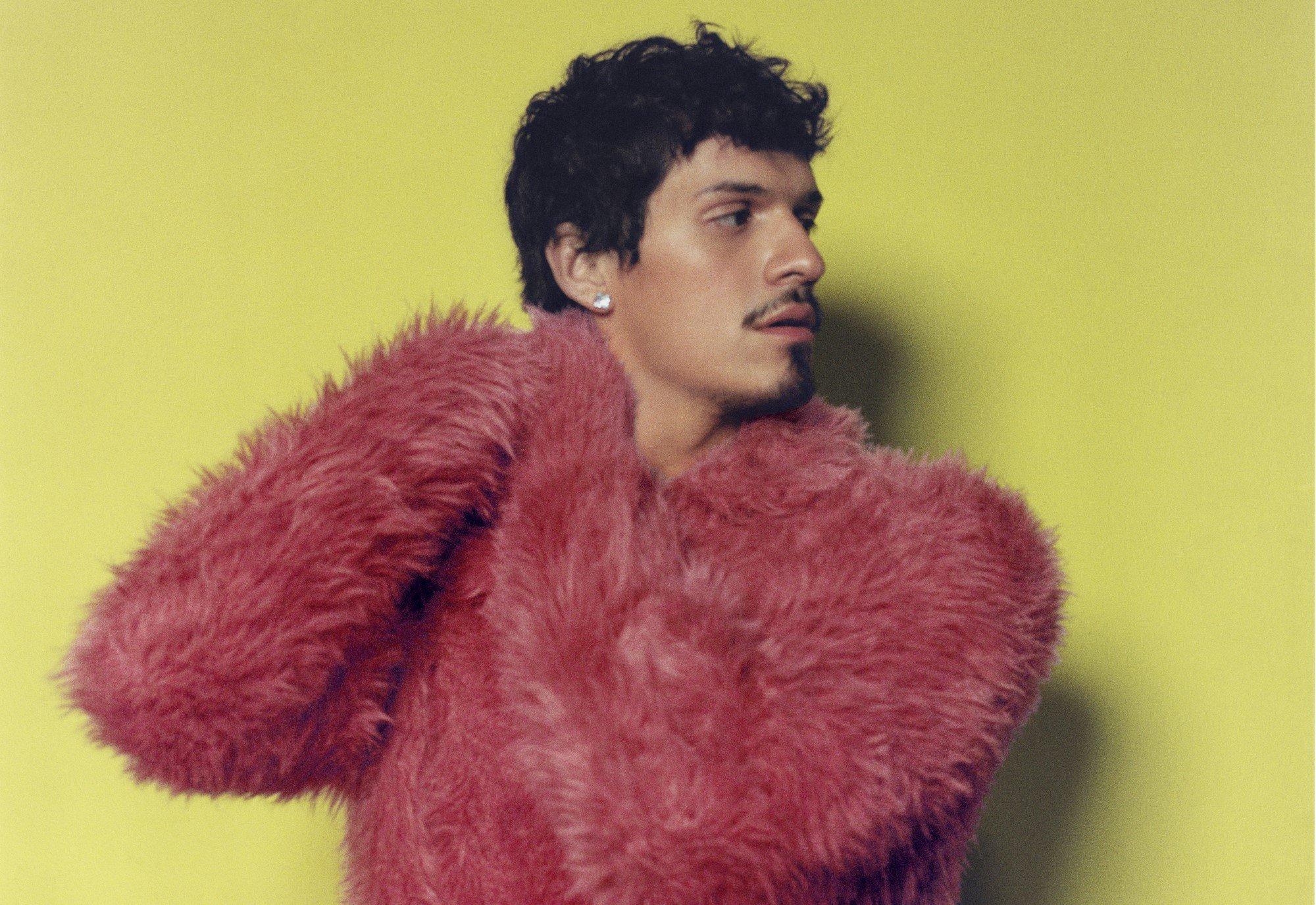
Photo: Aitor Laspiur
interview
Omar Apollo Embraces Heartbreak And Enters His "Zaddy" Era On 'God Said No'
Alongside producer Teo Halm, Omar Apollo discusses creating 'God Said No' in London, the role of poetry in the writing process, and eventually finding comfort in the record's "proof of pain."
"Honestly, I feel like a zaddy," Omar Apollo says with a roguish grin, "because I'm 6'5" so, like, you can run up in my arms and stay there, you know what I mean?"
As a bonafide R&B sensation and one of the internet’s favorite boyfriends, Apollo is likely used to the labels, attention and online swooning that come with modern fame. But in this instance, there’s a valid reason for asking about his particular brand of "zaddyhood": he’s been turned into a Bratz doll.
In the middle of June, the popular toy company blasted a video to its nearly 5 million social media followers showing off the singer as a real-life Bratz Boy — the plastic version draped in a long fur coat (shirtless, naturally), with a blinged-out cross necklace and matching silver earrings as he belts out his 2023 single "3 Boys" from a smoke-covered stage.
The video, which was captioned "Zaddy coded," promptly went viral, helped along by an amused Apollo reposting the clip to his own Instagram Story. "It was so funny," he adds. "And it's so accurate; that's literally how my shows go. It made me look so glamorous, I loved it."
The unexpected viral moment came with rather auspicious timing, considering Apollo is prepping for the release of his hotly anticipated sophomore album. God Said No arrives June 28 via Warner Records.
In fact, the star is so busy with the roll-out that, on the afternoon of our interview, he’s FaceTiming from the back of a car. The day prior, he’d filmed the music video for "Done With You," the album’s next single. Now he’s headed to the airport to jet off to Paris, where he’ll be photographed front row at the LOEWE SS25 men’s runway show in between Sabrina Carpenter and Mustafa — the latter of whom is one of the few collaborators featured on God Said No.
Apollo’s trusted co-writer and producer, Teo Halm, is also joining the conversation from his home studio in L.A. In between amassing credits for Beyoncé (The Lion King: The Gift), Rosalía and J Balvin (the Latin GRAMMY-winning "Con Altura"), SZA ("Notice Me" and "Open Arms" featuring Travis Scott) and others, the 25-year-old virtuoso behind the boards had teamed up with Apollo on multiple occasions. Notably, the two collabed on "Evergreen (You Didn’t Deserve Me At All)," which helped Apollo score his nomination for Best New Artist at the 2023 GRAMMYs.
In the wake of that triumph, Apollo doubled down on their creative chemistry by asking Halm to executive produce God Said No. (The producer is also quick to second his pal’s magnetic mystique: "Don't get it twisted, he's zaddy, for sure.")
Apollo bares his soul like never before across the album’s 14 tracks, as he processes the bitter end of a two-year relationship with an unnamed paramour. The resulting portrait of heartbreak is a new level of emotional exposure for a singer already known for his unguarded vulnerability and naked candor. (He commissioned artist Doron Langberg to paint a revealing portrait of him for the cover of his 2023 EP Live For Me, and unapologetically included a painting of his erect penis as the back cover of the vinyl release.)
On lead single "Spite," he’s pulled between longing and resentment in the wake of the break-up over a bouncing guitar riff. Second single "Dispose of Me" finds Apollo heartsick and feeling abandoned as he laments, "It don’t matter if it’s 25 years, 25 months/ It don’t matter if it’s 25 days, it was real love/ We got too much history/ So don’t just dispose of me."
Elsewhere, the singer offers the stunning admission that "I would’ve married you" on album cut "Life’s Unfair." Then, on the very next song — the bumping, braggadocious "Against Me" — Apollo grapples with the reality that he’s been permanently altered by the love affair while on the prowl for a rebound. "I cannot act like I’m average/ You know that I am the baddest bitch," he proclaims on the opening verse, only to later admit, "I’ve changed so much, but have you heard?/ I can’t move how I used to."
More Omar Apollo News & Videos

Omar Apollo Embraces Heartbreak And Enters His "Zaddy" Era On 'God Said No'
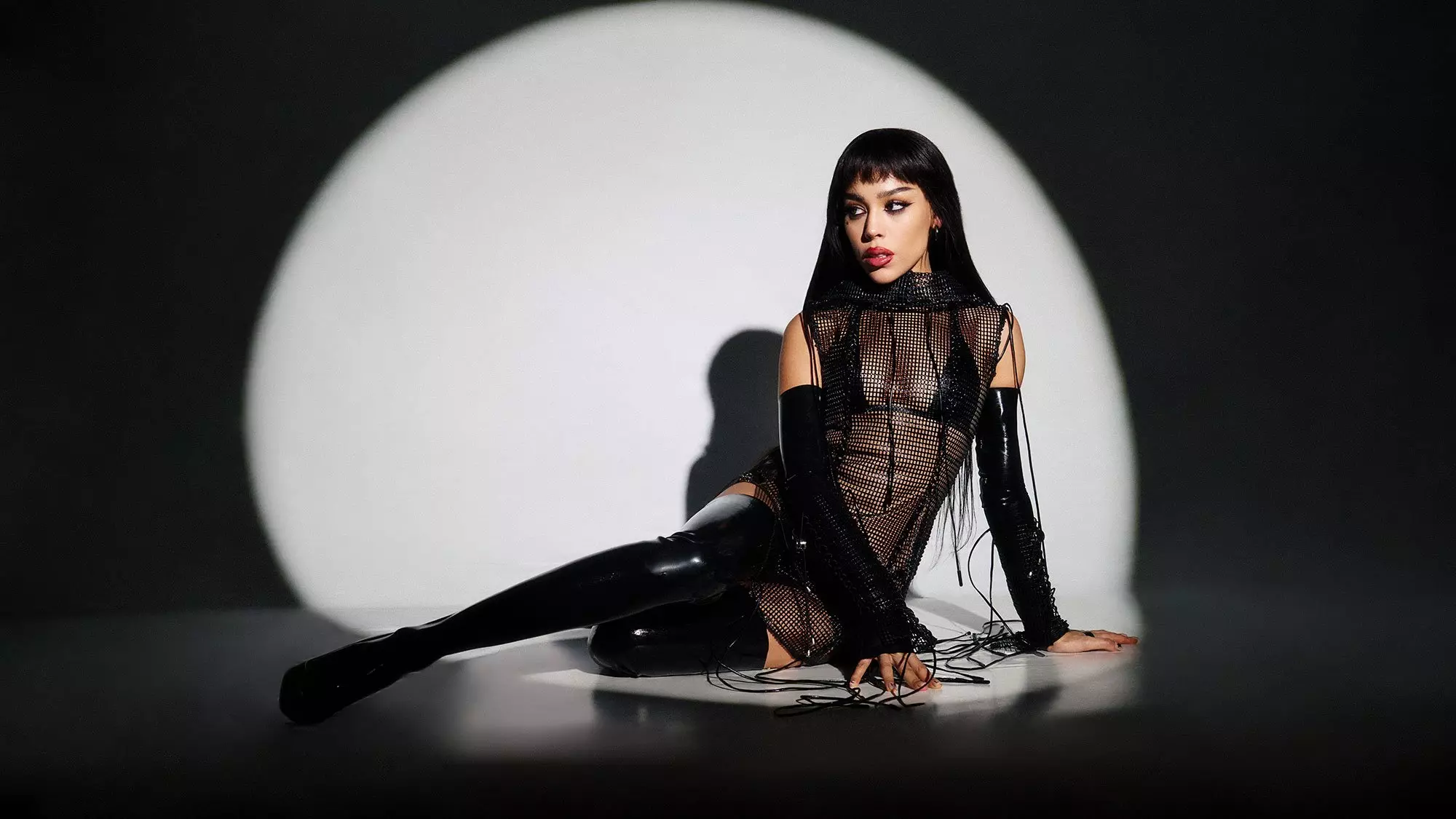
How Danna Paola Created 'CHILDSTAR' By Deconstructing Herself
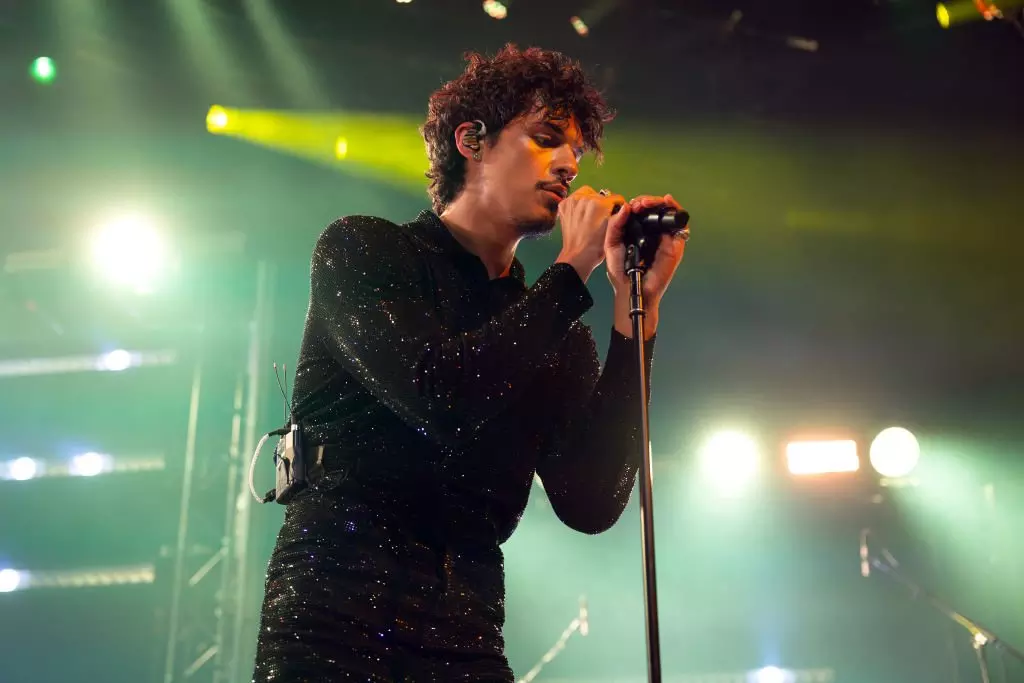
On Omar Apollo's New EP 'Live for Me,’ Limitless Experimentation Created Catharsis

Listen To GRAMMY.com's LGBTQIA+ Pride Month 2023 Playlist Featuring Demi Lovato, Sam Smith, Kim Petras, Frank Ocean, Omar Apollo & More

Omar Apollo On “Evergreen,” Growth & Longing
Given the personal subject matter filling God Said No — not to mention the amount of acclaim he earned with Ivory — it would be understandable if Apollo felt a degree of pressure or anxiety when it came to crafting his sophomore studio set. But according to the singer, that was entirely not the case.
"I feel like I wouldn’t be able to make art if I felt pressure," he says. "Why would I be nervous about going back and making more music? If anything, I'm more excited and my mind is opened up in a whole other way and I've learned so much."
In order to throw his entire focus into the album’s creation, Apollo invited Halm to join him in London. The duo set up shop in the famous Abbey Road Studios, where the singer often spent 12- to 13-hour days attempting to exorcize his heartbreak fueled by a steady stream of Aperol spritzes and cigarettes.
The change of scenery infused the music with new sonic possibilities, like the kinetic synths and pulsating bass line that set flight to "Less of You." Apollo and Halm agree that the single was directly inspired by London’s unique energy.
"It's so funny because we were out there in London, but we weren't poppin' out at all," the Halm says. "Our London scene was really just, like, studio, food. Omar was a frickin' beast. He was hitting the gym every day…. But it was more like feeding off the culture on a day-to-day basis. Like, literally just on the walk to the studio or something as simple as getting a little coffee. I don't think that song would've happened in L.A."
Poetry played a surprisingly vital role in the album’s creation as well, with Apollo littering the studio with collections by "all of the greats," including the likes of Ocean Vuong, Victoria Chang, Philip Larkin, Alan Ginsberg, Mary Oliver and more.
"Could you imagine making films, but never watching a film?" the singer posits, turning his appreciation for the written art form into a metaphor about cinema. "Imagine if I never saw [films by] the greats, the beauty of words and language, and how it's manipulated and how it flows. So I was so inspired."
Perhaps a natural result of consuming so much poetic prose, Apollo was also led to experiment with his own writing style. While on a day trip with his parents to the Palace of Versailles, he wrote a poem that ultimately became the soaring album highlight "Plane Trees," which sends the singer’s voice to new, shiver-inducing heights.
"I'd been telling Teo that I wanted to challenge myself vocally and do a power ballad," he says. "But it wasn't coming and we had attempted those songs before. And I was exhausted with writing about love; I was so sick of it. I was like, Argh, I don't want to write anymore songs with this person in my mind."
Instead, the GRAMMY nominee sat on the palace grounds with his parents, listening to his mom tell stories about her childhood spent in Mexico. He challenged himself to write about the majestic plane tree they were sitting under in order to capture the special moment.
Back at the studio, Apollo’s dad asked Halm to simply "make a beat" and, soon enough, the singer was setting his poem to music. (Later, Mustafa’s hushed coda perfected the song’s denouement as the final piece of the puzzle.) And if Apollo’s dad is at least partially responsible for how "Plane Trees" turned out, his mom can take some credit for a different song on the album — that’s her voice, recorded beneath the same plane tree, on the outro of delicate closer "Glow."
Both the artist and the producer ward off any lingering expectations that a happy ending will arrive by the time "Glow" fades to black, however. "The music that we make walks a tightrope of balancing beauty and tragedy," Halm says. "It's always got this optimism in it, but it's never just, like, one-stop shop happy. It's always got this inevitable pain that just life has.
"You know, even if maybe there wasn't peace in the end for Omar, or if that wasn't his full journey with getting through that pain, I think a lot of people are dealing with broken hearts who it really is going to help," the producer continues. "I can only just hope that the music imparts leaving people with hope."
Apollo agrees that God Said No contains a "hopeful thread," even if his perspective on the project remains achingly visceral. Did making the album help heal his broken heart? "No," he says with a sad smile on his face. "But it is proof of pain. And it’s a beautiful thing that is immortalized now, forever.
"One day, I can look back at it and be like, Wow, what a beautiful thing I experienced. But yeah, no, it didn't help me," he says with a laugh.
Latest News & Exclusive Videos

Behind Ryan Tedder's Hits: Stories From The Studio With OneRepublic, Beyoncé, Taylor Swift & More

Crowder Performs "Grave Robber"

NCT 127 Essential Songs: 15 Tracks You Need To Know From The K-Pop Juggernauts

5 Rising L.A. Rappers To Know: Jayson Cash, 310babii & More

Why Elliott Smith's 'Roman Candle' Is A Watershed For Lo-Fi Indie Folk
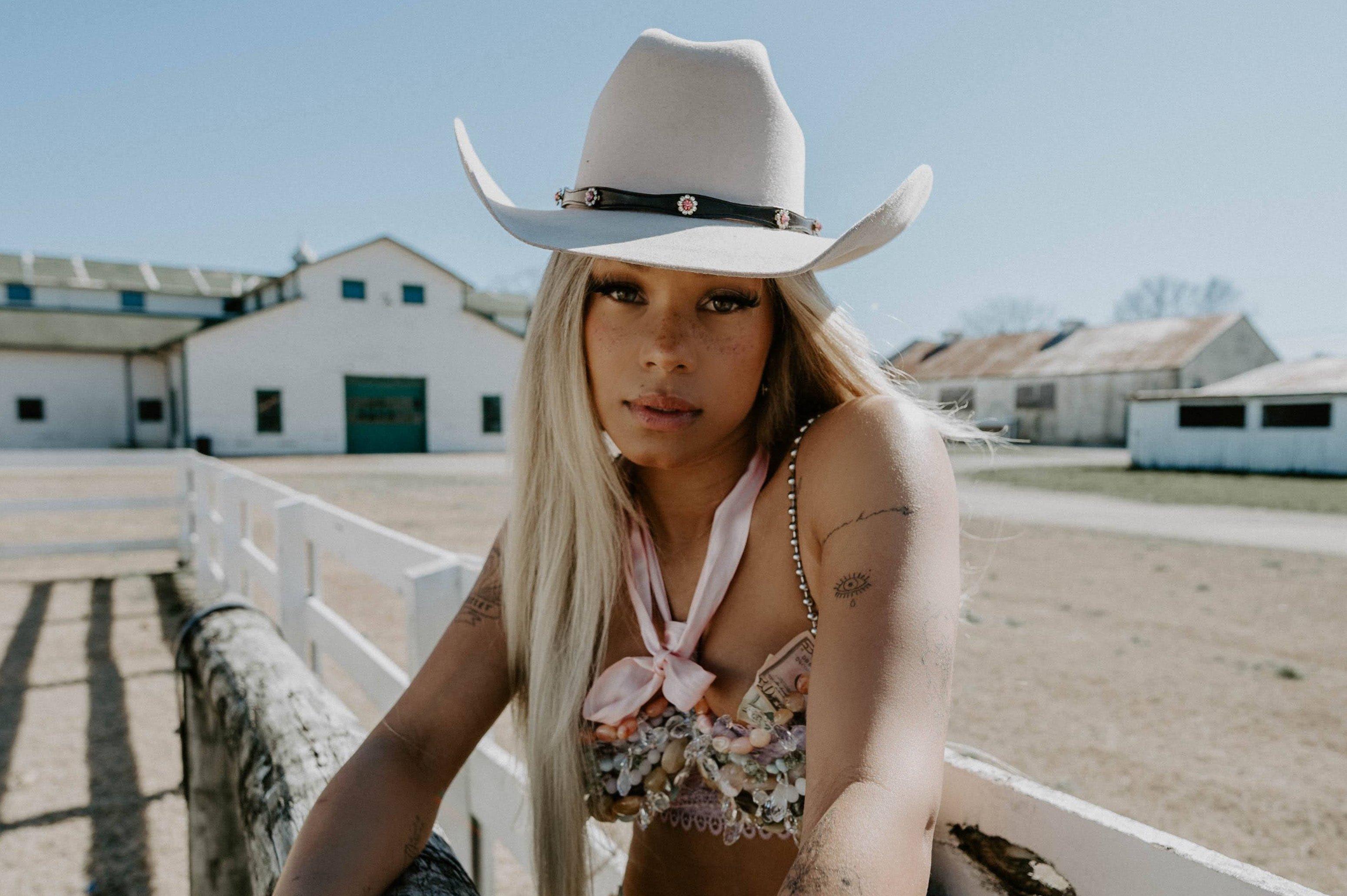
Photo: Chase Foster
interview
Tanner Adell's Big Year: The Country Newcomer Talks Stagecoach, "BLACKBIIRD," & Meeting Her Childhood Idols
As Tanner Adell continues making waves in country music, she shares some of the most monumental moments from her career so far — from featuring on Beyoncé's critically acclaimed 'COWBOY CARTER' to making space for Black women at the CMT Music Awards.
With one bold tweet, Tanner Adell's life changed.
"As one of the only Black girls in the country music scene, I hope Bey decides to sprinkle me with a dash of her magic for a collab," she wrote, minutes after Beyoncé premiered "TEXAS HOLD 'EM" and "16 CARRIAGES" during this year's Super Bowl in February.
At first, Adell was mocked for her pitch. "You're trying too hard, love," one user said. Another chimed in, "Baby, that album is finished with all the songs cleared. I don't know about this one. Maybe, open for the tour," another user remarked.
But she wasn't bothered by the chatter: "Those people said I look desperate, I'm like, 'You must not know me, b—!" Adell reveals to GRAMMY.com with a hearty laugh.
Confidence is the inner core of the Tanner Adell ethos. And her boldness paid off because shortly after when Beyoncé approached her to feature on COWBOY CARTER.
In Adell's first music release of 2024, she appeared alongside Brittney Spencer, Tiera Kennedy, and Reyna Roberts in Beyoncé's cover of "BLACKBIIRD" by The Beatles. It was a full-circle moment for Adell in more ways than one, as her father used to sing the song to her as a child. Little did she know, decades later, she would popularize the track's backstory — the plight of Black women in the American South — alongside one of her heroes.
But before Adell became one of Beyoncé's songbirds, she was also the Buckle Bunny. On the 11-track mixtape, Adell traced the provocative tales of an acrylic nail-wearing, lasso-wielding heartbreaker. But for every Black girl that listens, it's more than a country project. It's also a reminder that it's okay to be feminine and girly, just like Shania Twain, Carrie Underwood or Taylor Swift.
Among her rodeo of exciting firsts, Adell tacks another on June 8, when she makes her debut at Nashville's Nissan Stadium during CMA Fest. She'll perform on the Platform Stage at the stadium; the next day, she'll play a set at the Good Molecules Reverb Stage outside of Bridgestone Arena.
Below, hear from Adell about her most memorable firsts thus far, from having her debut daytime television performance on "The Jennifer Hudson Show" to bonding with Gayle King behind the scenes at Stagecoach Music Festival.
Seeing Her Breakthrough Single, "Buckle Bunny," Have A Second Life
I released "Buckle Bunny" on the Buckle Bunny EP in July 2023. I actually teased it on social media first. Almost nine months before that, I had gone super viral with it. It was doing incredibly well, so my plans were to release it in January or February of last year. But, I ended up signing a record deal in December of 2022. There were plans for it at that time, but the timeline kept getting pushed back. It turned into a fight to get that song back into my hands, which was what prompted me to go independent. Eventually, I was able to work with my label, shake hands, and mutually part ways.
I started this year as an independent artist with this song that everybody loves. It's become a huge part of my brand, but it's really my life story. People might think it's a dumb song that was easy to write, but I was called a "buckle bunny." As a teenager growing up between Los Angeles and Star Valley, Wyoming, I was into glam country, and "Buckle Bunny" is the pinnacle of that.
"Buckle Bunny" was my first single that charted. I felt like I finally had broken through that invisible box that Nashville put me in as a country musician. It was me saying, I'm not going to follow any rules. I'm going to be as true to myself as possible.
We, as Black women, have been fighting our whole lives. We've been fighting for space. I'm purposely trying to bring softness into the picture, allowing women who listen to my music to know that it's okay to feel that way. We don't always have to have our walls up.
"Buckle Bunny" is aggressively confident, but I think that's the door to softness. You have to be self-assured to let your walls down. My newest single, "Whiskey Blues," is my next step into that. I have another song on my social media, "Snakeskin," that people want me to release. "Buckle Bunny" is like the girl who protects those softer moments.
In a way, I look at all of this as a relationship between Tanner Adell, the artist, and Tanner, the person. For me, Tanner Adell is the buckle bunny. Then, you have Tanner, who's on the inside, writing all of these songs.
Serving A Bold Fashion Statement On Her First Major Red Carpet
Ask and ye shall receive 🤎 CMT back stage w John Shearer https://t.co/fO6lNtYVr3 pic.twitter.com/NekkeT01oz
— Tanner Adell (@tanneradell) April 10, 2024
I wore Bantu knots! I've always loved Bantu knots in all styles, the really small ones and the larger ones. There were ideas about whether I should do a certain number of them that was significant to me in some way.
I work very closely with Bill Wackermann, who was the CEO of Wilhemina Models. He does a lot of styling and has a close relationship with my manager. So, my manager was like, "You would love him!" At the time, I was trying to hone in on what myself is. What's the message I'm trying to convey through my fashion, hair, and beauty?
Bill sat down with me, and I told him I wanted Natalia Fedner to do my dress, which is that stretchy chain metal dress. Originally, I thought I would do my long blonde hair, but Bill was the one who told me, "This is your first major red carpet as an invited artist. Think about what you want your hair to say." As a Black woman, our hair tells 1,000 stories with whatever it is, and the lightbulb went off in my head.
I knew I wanted my hair to say everything I needed to say without having to say anything at all. I also knew there would be a lot of people who didn't know the significance behind it or just thought it was some extreme hairstyle.
I've looked very deeply into my heritage. It turns out I have a bit of Bantu heritage in my DNA. I thought that was so cool because I do love the knots so much.
The CMT Awards were a big thing at my school, Utah Valley University. Everyone would get together in the dorms and watch the show. It's crazy that a couple years ago, I was watching it, and I'm here now. I feel very respected and loved. People I've looked up to would come up to me, and I was like, "I'm a huge fan." And they're like, "No! I listened to you."
I got to meet Gayle King, who I absolutely love. I remember watching her from afar while she was doing "CBS Mornings." She saw me from across the room, and I kid you not, in the middle of her interview, she started walking towards me. She was like, "I just want to tell you that you're so beautiful. The Bantu knots are stunning." That was my favorite moment of the night.
I also had the chance to see Tiera Kennedy. She's so sweet. We got matching blackbird tattoos before that. Being on the red carpet for the first time, it was comforting to see a familiar face. It really reinforces that idea that I belong here.
Being A Part Of COWBOY CARTER
So, I'm adopted. I have four siblings. We're all biracial, but our adoptive parents are both white. Obviously, my dad is a white man with five Black children. My parents always wanted me to understand that I am a Black woman, and he was very educational when it came to music. He taught me about the Black female power players and the buzz in the industry. But The Beatles were his favorite. So, when I finally told them the news, my dad immediately got choked up. He told me that "Blackbird" was one of his favorite Beatles songs.
My dad isn't the best with words when it comes to expressing his emotions, especially in front of people. He's a quiet, reserved dude. So, he eventually texts me, sending me screenshots about the meaning behind "Blackbird." The reason why it was his favorite song was because he had Black girls, and he told me, "This is special. This is not a burden to carry, but it might be a bit of weight on your shoulders. Keep your head up high and walk knowing that this is why he wrote this song."
I can remember going to a recital as a kid and being so nervous, but my dad was so confident and excited about my abilities. Was that strategic? Was it quiet strength? Maybe. It feels like this song has been a part of my whole life. So, to be on it, on such a massive album, feels very divine.
The whole process was a surprise. It took a few weeks to set in. But I always knew I would work with [Beyoncé], and I always said it's a matter of "when," not if.
On the day of the Super Bowl, I saw that black-and-white picture of her, and I thought it looked a lot like a photoshoot that I took the week before. Let me make a tweet, just to put it out there. I don't know — she's magical! She has her way of knowing everything that's going on all the time.
I think that tweet has almost 10 million views. It was fun to go back to that tweet to see the people who were supporting me. And also getting to say "I told you" to the people who didn't. It kicked off a Renaissance — pun intended.
Performing At Her First Stagecoach Music Festival
thank you so much @Stagecoach and thank you to @LEVIS for making me the first artist EVER to perform at Stage Coach with a custom Levi’s fit 🥹 thankyou for executing my vision so perfectly 🩷 https://t.co/NFs26JkC2j
— Tanner Adell (@tanneradell) April 28, 2024
I have bad social anxiety, and I get nervous in front of crowds and people. So, festivals were never something that interested me, but Stagecoach was always one I felt like I could go to. And I was not disappointed.
I had the first slot of the day, which is a s—ty slot for anyone, but you have to pay your dues in country music. It's how you build your cred with these festivals, to show you're a hard worker and will perform like you're at a sold-out show in Madison Square Garden. And I did.
Mentally, I prepared for no one. I told myself it was okay if nobody came, and I'll perform like I always do. I'll figure out where the camera is and perform it for the jumbotron, so if no one comes to the pit, the people watching the livestream will have a great show.
Well, I didn't have an empty pit! People showed the f— up and out. I heard people in line thought they were going to miss it because the gates opened late. Within the first 10 minutes, the VIP pit was half-filled with people screaming and running in their sweet little cowboy boots and hats. That never happens at Stagecoach or Coachella, but it's a testament to the relationship I built within my listeners. It was eye-opening for me. I don't think I'm ever going to play to a dead crowd again.
Before, Levi's reached out and said I was the first artist they wanted to collaborate with for Stagecoach. So, they custom-made my outfit. I told them I have these ribbons, inspired by my mom, who was a rodeo queen. I also told them if they can't incorporate them, I probably won't do it. But they loved it! And it was special because it came back to my mom. She was a winner, so when I wear the ribbons, I'm also a winner.
My mom has competed in over 1,000 competitions and probably places in half of those. In Wyoming, we had a big wall, covered in those IQHA (International Quarter Horse Association) ribbons. She gave me a strong sense of competition.
Making Her Debut On Daytime TV
I have overcome very serious, debilitating stage fright. I don't get nervous anymore, and performing live is my favorite thing. But I was not prepared for what a television show taping looks like.
We had a soundcheck, and there were a bunch of suits in groups of threes and fours standing everywhere. There were all these cameras and lights. Then, I start realizing I'm about to meet J. Hud, who I made little custom Crocs for. It was a dream come true.
I know a lot about her story. We have very different upbringings, but we're similar in the sense of trying to stand on ground that isn't steady. I see her as someone who is a great example. She's reached so many different avenues. For me to be able to sit down with an EGOT winner is a great honor.
I kind of like to keep my manifestations as quiet as possible. I don't tell anybody anything, but an EGOT is something I wouldn't mind having, you know?
I look at her as a woman who exceeded greatness. So, it was just amazing — and for my first television debut. I felt like this is right for me.
Why 2024 Is The Year Women In Country Music Will Finally Have Their Moment

